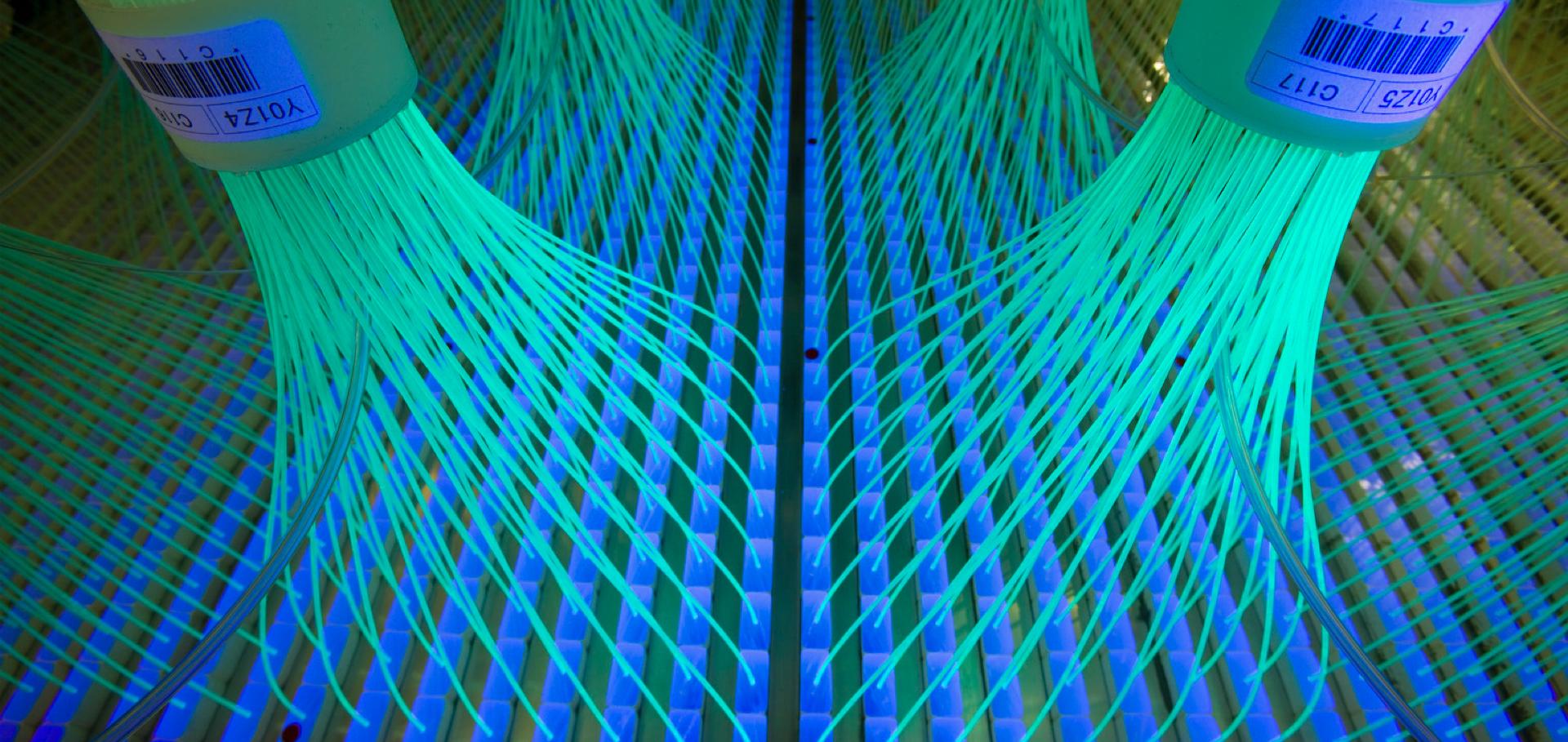Measurement of inclusive double-differential νμ charged-current cross section with improved acceptance in the T2K off-axis near detector
Physical Review D American Physical Society 98:1 (2018) 012004
Abstract:
We report a measurement of the flux-integrated cross section for inclusive muon neutrino chargedcurrent interactions on carbon. The double-differential measurements are given as a function of the muon momentum and angle. Relative to our previous publication on this topic, these results have an increased angular acceptance and higher statistics. The data sample presented here corresponds to 5.7 × 1020 protons on target. The total flux-integrated cross section is measured to be ð6.950 0.662Þ × 10−39 cm2 nucleon−1 and is consistent with our simulation.Search for CP violation in Neutrino and Antineutrino Oscillations by the T2K experiment with $2.2\times10^{21}$ protons on target
(2018)
Physics potentials with the second Hyper-Kamiokande detector in Korea
Progress of Theoretical and Experimental Physics Oxford University Press 2018:6 (2018)
Abstract:
Hyper-Kamiokande consists of two identical water-Cherenkov detectors of total 520~kt with the first one in Japan at 295~km from the J-PARC neutrino beam with 2.5$^{\textrm{o}}$ Off-Axis Angles (OAAs), and the second one possibly in Korea in a later stage. Having the second detector in Korea would benefit almost all areas of neutrino oscillation physics mainly due to longer baselines. There are several candidate sites in Korea with baselines of 1,000$\sim$1,300~km and OAAs of 1$^{\textrm{o}}$$\sim$3$^{\textrm{o}}$. We conducted sensitivity studies on neutrino oscillation physics for a second detector, either in Japan (JD $\times$ 2) or Korea (JD + KD) and compared the results with a single detector in Japan. Leptonic CP violation sensitivity is improved especially when the CP is non-maximally violated. The larger matter effect at Korean candidate sites significantly enhances sensitivities to non-standard interactions of neutrinos and mass ordering determination. Current studies indicate the best sensitivity is obtained at Mt. Bisul (1,088~km baseline, $1.3^\circ$ OAA). Thanks to a larger (1,000~m) overburden than the first detector site, clear improvements to sensitivities for solar and supernova relic neutrino searches are expected.Search for boosted dark matter interacting with electrons in Super-Kamiokande
Physical Review Letters American Physical Society 120:22 (2018) 221301
Abstract:
A search for boosted dark matter using 161.9 kt yr of Super-Kamiokande IV data is presented. We search for an excess of elastically scattered electrons above the atmospheric neutrino background, with a visible energy between 100 MeV and 1 TeV, pointing back to the Galactic center or the Sun. No such excess is observed. Limits on boosted dark matter event rates in multiple angular cones around the Galactic center and Sun are calculated. Limits are also calculated for a baseline model of boosted dark matter produced from cold dark matter annihilation or decay. This is the first experimental search for boosted dark matter from the Galactic center or the Sun interacting in a terrestrial detector.Search for neutrinos in super-kamiokande associated with the GW170817 neutron-star merger
Astrophysical Journal Letters American Astronomical Society 857:1 (2018) 1-6


